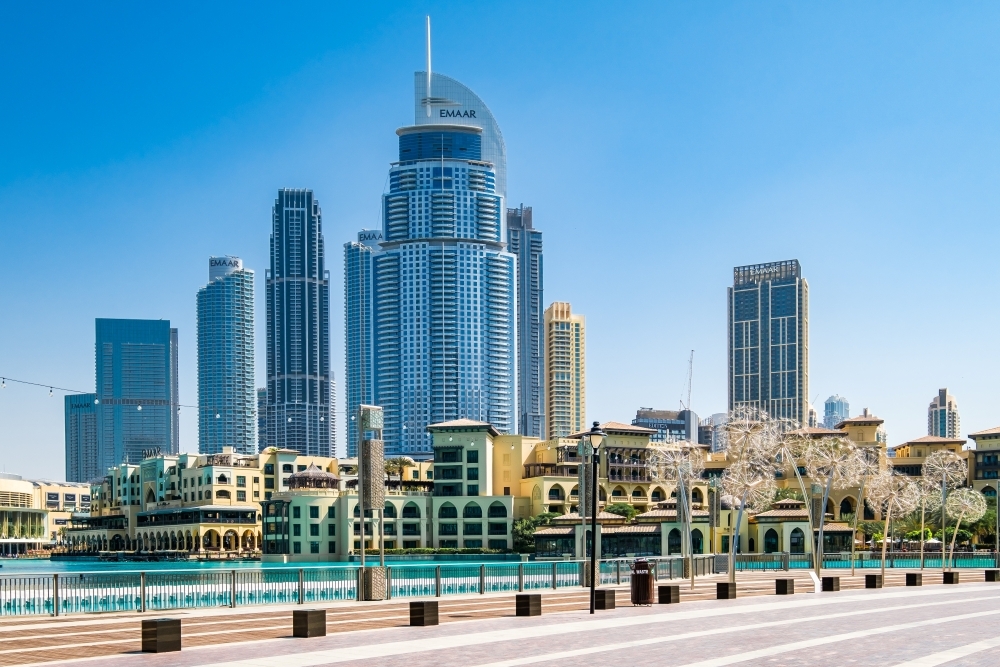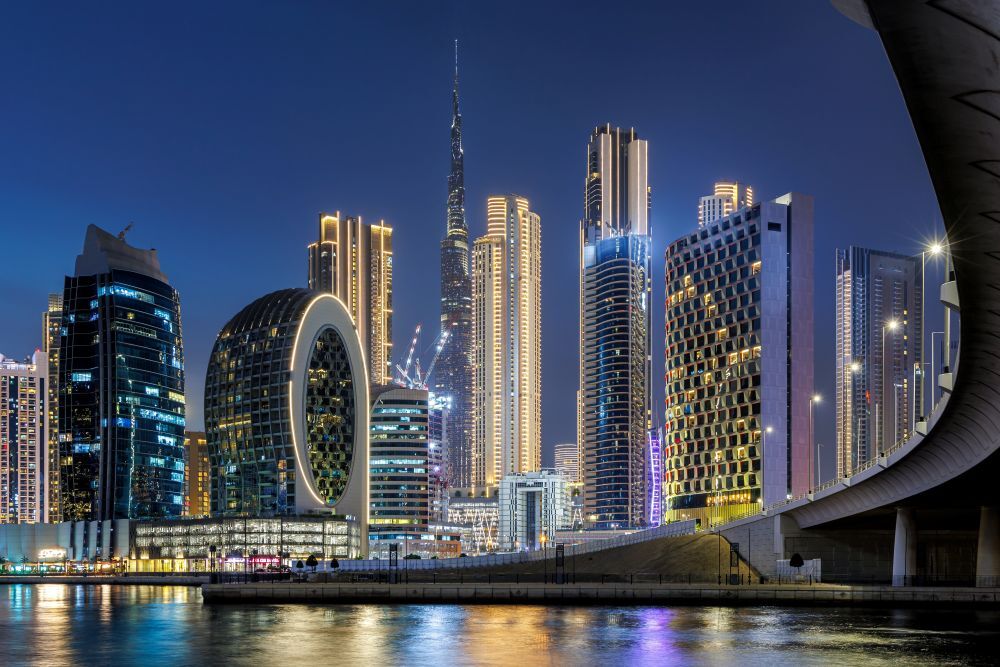A Run Through the Biggest Stadiums in the World
The world of sports has grown massively in the past few decades, leading to the construction of some of the most impressive stadiums and arenas ever seen. For many, sports are like the Holy Grail, and athletes train their whole lives to compete at the highest levels. Major sports competitions attract enormous crowds eager to witness their home teams in action. In this guide, we take you through some of the biggest stadiums in the world, highlighting the incredible passion these cities have for their sports and the monumental venues that bring fans together in the spirit of celebration and competition.


10 of the World’s Largest Stadiums (in Order of Capacity)
1. Narendra Modi Stadium
The Narendra Modi Stadium, located in Ahmedabad, Gujarat, is the largest cricket stadium in the world. Situated on the banks of the Sabarmati River, it was built on the site of the former Sardar Patel Stadium, which was demolished in 2015. Designed by Australia's Populous and constructed by Larsen and Toubro, the stadium took five years and US$100 million to complete. With a seating capacity of 132,000, it surpassed Melbourne Cricket Ground as the world's largest cricket stadium. Named after Prime Minister Narendra Modi in 2021, the venue hosts Test Cricket, One Day International, T20, and Indian Premier League matches.
2. Rungrado 1st of May Stadium
After Seoul won the rights to host the 1988 Summer Olympics, North Korea aimed to showcase its sporting prowess, securing the bid for the 13th World Festival of Youth and Students in Pyongyang in 1989. Massive construction efforts were initiated for the festival, one of them being the Rungrado 1st of May Stadium. Also known as Rungrado May Day Stadium, it symbolises the international labour movement and commemorates its inauguration date. Built over an area of 51 acres, it stands eight stories high and was the largest stadium in Aisa when completed. The stadium features a scalloped roof with 16 arches that resemble a magnolia blossom and seats 114,000 spectators, making it the world's second-largest stadium. It currently hosts national celebrations, sports events, and the Arirang Festival mass games.
3. Michigan Stadium
Michigan Stadium, known as "The Big House," is the colossal football arena of the University of Michigan in Ann Arbor. It is the largest stadium in the US and Western Hemisphere, and the third largest globally. The stadium has an official capacity of 107,601 but has often been seen overflowing, with crowds exceeding 115,000 in 2013. Spearheaded by Fielding Yost, former Wolverines coach, it was completed in 1927 with an initial seating of 72,000 but was designed with footings to allow the stadium capacity to be increased beyond 100,000. Every home game since 1975 has drawn 100,000+ attendees, maintaining a streak of over 300 contests. It has witnessed historic matches, even hosting Real Madrid and Manchester United in 2014.
4. Beaver Stadium
Voted as one of the best football stadiums in American college football, Beaver Stadium at Pennsylvania State University is the fourth largest stadium in the world. Originally built in 1909 on the west side of the campus, it was relocated to the east side in 1960, subsequently doubling its capacity. Beaver Stadium has since been the home of the Penn State Nittany Lions of the Big Ten Conference. It has built a reputation as one of the toughest venues for opposing teams in collegiate athletics. The stadium has undergone six expansions since its inception, reaching a capacity of 106,572 today.
5. Ohio Stadium
Nestled gracefully along the banks of the Olentangy River stands Ohio Stadium, a symbol of collegiate sports. Home to the Ohio State Buckeyes football team, it's affectionately known as 'The Horseshoe' or 'The Shoe' due to its distinctive horseshoe shape. Designed by Howard Dwight Smith to echo the grandeur of the Pantheon in Rome, it has welcomed nearly 40 million fans since opening in 1922. Originally costing $1.3 million, a 2001 refurbishment valued at over $194 million solidified its status as a monument to college football. With a seating capacity now at 102,780 and a unique double-deck design, this hallowed ground offers fans unobstructed vantage points and a formidable home-field advantage for the Buckeyes.
6. Kyle Field
Kyle Field, steeped in history dates back to the mid-1920s and was named after Edwin J. Kyle, a key figure in its construction. Today it serves as the cherished home of the Texas A&M Aggies football team. Initially featuring a single-tier grandstand in a horseshoe layout, the stadium has undergone significant expansion since 1929 and currently stands as the Southeastern Conference's largest stadium and America's fourth largest. Rich in tradition, the stadium symbolises the Aggies' spirit, notably marked by the 'Home of the 12th Man' entrance, signifying the fans' support for players. Renovated by Populous, the team behind the Narendra Modi Stadium, Kyle Field’s design blends the university's heritage with a forward-looking vision, celebrating its profound impact on generations of students, athletes, and alumni.
7. Tiger Stadium
Tiger Stadium, famously known as "Death Valley," embodies the heart and soul of Louisiana State University football. With over 100,000 roaring fans, it transforms into the state's fifth-largest city on game days. Dan Borne's iconic announcement sets the stage for an electric atmosphere as the Fighting Tigers take the field. For LSU fans, spending a night in Tiger Stadium is a revered tradition, passed down through generations. The roar of the crowd, amplified by its nickname, is often intimidating for opposing teams, earning it a reputation as one the most daunting venues for college football. From its modest 1924 beginnings to today's 102,321 capacity, it remains a symbol of pride and an unrivalled fortress, earning titles like "the scariest place to play."
8. Neyland Stadium
Neyland Stadium, home to the Tennessee Volunteers football team, has celebrated over a century of gridiron glory. Named in honour of General Robert R. Neyland, the stadium embodies the rich tradition and legacy of Tennessee's football programme. Hosting six national championship-winning teams and nurturing the careers of 22 players and four head coaches enshrined in the College Football Hall of Fame, Neyland Stadium is revered by fans and athletes alike. With an official capacity of 101,915, it serves as more than a football venue, hosting conventions, concerts, and NFL exhibition games. From its humble beginnings in 1921 to its 16 expansion projects, Neyland Stadium remains an iconic landmark in the world of college football.
9. Darrell K Royal-Texas Memorial Stadium
Darell K Royal-Texas Memorial Stadium, inaugurated on Thanksgiving Day in 1924, honours the sacrifices of Texans in World War I and was later rededicated to veterans of all wars in 1977. Now in its 101 season, the stadium has undergone multiple upgrades, reflecting its enduring significance in Texas history. Starting with modest stands for 27,000 fans and a football field, the stadium has grown into one of the world's largest, now seating over 100,000 people. It's become a modern marvel, retaining its heritage while serving as a grand venue for the Texas Longhorns football team and various events.
10. Bryant-Denny Stadium
Bryant-Denny Stadium, located on the southwestern edge of the University of Alabama campus, is one of the most prominent college football venues in America. Opened in 1929, it was initially named Denny Stadium after George H. Denny, the university's president. In 1975, it was renamed to honour legendary head coach Paul "Bear" Bryant who coached the Crimson Tide until 1982. With a rich history and extensive expansions over the years, it now ranks among the top five on-campus football stadiums in the country and is the 10th largest in the world.
These venues show the deep passion and fervour that have grown around sports over the years. Many of them have hosted events where attendance exceeded capacity, highlighting the immense love for these sports. These stadiums are paving the way for countless athletes to realise their dreams, showcase their talents to the world, and create history. These monumental structures continue to entertain fans and inspire future generations while uniting people, and fostering a sense of community and shared excitement for fans all over the world.



